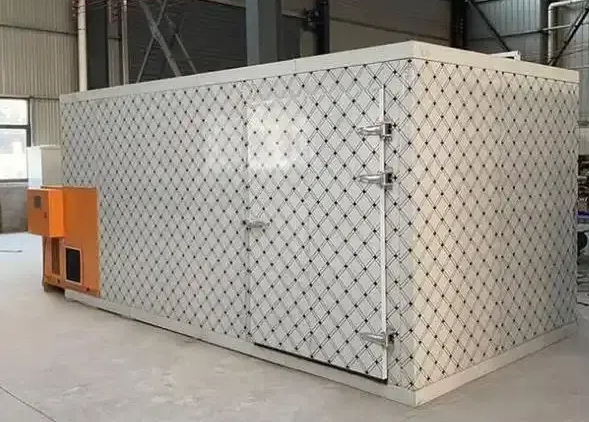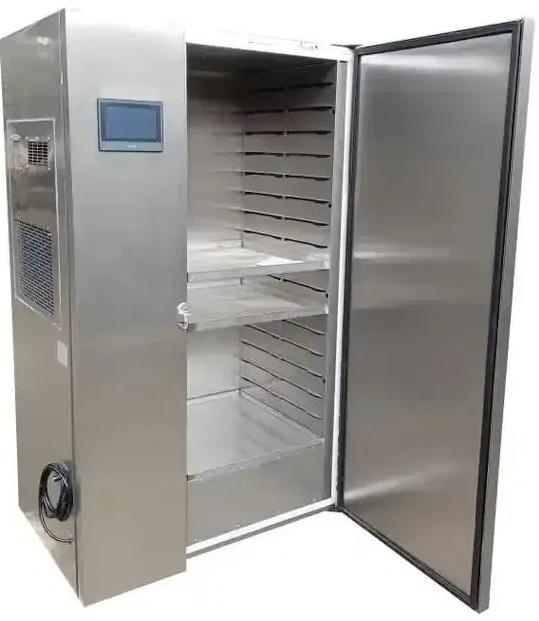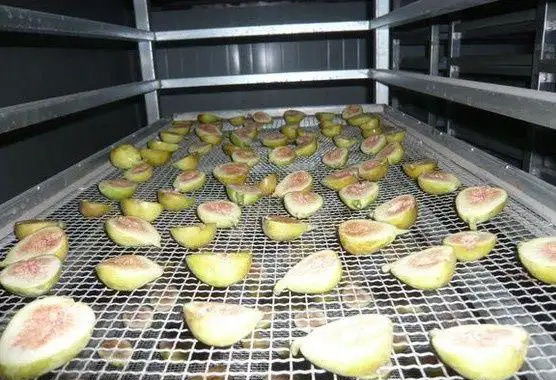
Content Menu
● Understanding Heat Pump Dryer Technology
● Benefits of Heat Pump Dryers for Food Processing
>> Energy Efficiency
>> Nutrient Preservation
>> Versatility
>> Cost-Effectiveness
● Environmental Impact of Heat Pump Dryers
● How Heat Pump Dryers Work
● Advantages Over Traditional Drying Methods
● Applications in Food Processing
● Case Studies Demonstrating Effectiveness
● Future Trends in Heat Pump Dryer Technology
● Conclusion
● FAQ
>> 1. What is a heat pump dryer?
>> 2. How does a heat pump dryer work?
>> 3. What are the advantages of using a heat pump dryer for food?
>> 4. Can heat pump dryers be used for all types of food?
>> 5. Are there any downsides to using a heat pump dryer?
Heat pump dryers represent a significant advancement in drying technology, particularly for food processing applications. These machines not only improve efficiency but also contribute to environmental sustainability. In this article, we will explore how heat pump dryer technology works, its benefits for food drying, and its positive impact on the environment.

Understanding Heat Pump Dryer Technology
Heat pump dryers operate on a principle similar to that of a refrigerator but in reverse. They utilize a closed-loop system that captures heat from the surrounding air and uses it to dry products efficiently. The process involves several key components:
- Evaporator: Absorbs heat from the air.
- Compressor: Increases the temperature of the absorbed heat.
- Condenser: Releases the heat into the drying chamber.
- Expansion Valve: Regulates the flow of refrigerant.
This cycle allows the dryer to recycle heat, reducing energy consumption significantly compared to traditional drying methods.
Benefits of Heat Pump Dryers for Food Processing
Energy Efficiency
One of the most significant advantages of heat pump dryers is their energy efficiency. These dryers can save up to 50% more energy than conventional dryers by utilizing lower temperatures and recycling heat. This efficiency translates into reduced operational costs for food manufacturers and processors.
Nutrient Preservation
Heat pump dryers operate at lower temperatures, which helps preserve the nutritional content of food products. Traditional drying methods often expose foods to high temperatures, leading to nutrient loss. By maintaining optimal drying conditions, heat pump dryers ensure that vitamins, minerals, and other essential compounds remain intact.
Versatility
Heat pump dryers are versatile and can be used for various food products, including fruits, vegetables, herbs, and meats. Their ability to control humidity and temperature makes them suitable for delicate items that require careful handling during the drying process.
Cost-Effectiveness
While the initial investment in heat pump dryers may be higher than traditional models, their long-term savings in energy costs can be substantial. The reduction in energy consumption leads to lower utility bills over time, making them a cost-effective solution for food processors looking to enhance their operations.
Environmental Impact of Heat Pump Dryers
The environmental benefits of heat pump dryer technology are substantial:
- Reduced Carbon Footprint: By consuming less energy, heat pump dryers contribute to lower greenhouse gas emissions. This reduction is crucial in combating climate change and promoting sustainability in food production.
- Water Conservation: Heat pump dryers condense moisture from the drying process and can recycle this water within the system, minimizing water waste. This feature is particularly beneficial in regions where water scarcity is an issue.
- No Harmful Emissions: Unlike traditional gas or electric dryers that may release pollutants into the atmosphere, heat pump dryers operate in a closed system that does not emit harmful gases or particulates.
How Heat Pump Dryers Work
Heat pump dryers utilize a refrigeration cycle to remove moisture from food products. Here's a step-by-step breakdown of how this technology operates:
1. Air Intake: Ambient air enters the dryer through an intake port.
2. Heating Process: The evaporator absorbs heat from this incoming air. The refrigerant within the evaporator evaporates and absorbs moisture from the air.
3. Compression: The compressor then compresses this gaseous refrigerant, raising its temperature significantly.
4. Condensation: The hot refrigerant gas moves to the condenser coils where it releases its heat into the drying chamber, warming up the air inside.
5. Moisture Removal: As warm air circulates around the food products in the chamber, it absorbs moisture from them.
6. Recycling Air: The now cooler air passes back through the evaporator where moisture is condensed into water and removed from the system while allowing some of its remaining heat to be recycled back into the dryer.
This continuous cycle allows for efficient moisture removal without excessive energy consumption.

Advantages Over Traditional Drying Methods
Heat pump dryers offer several advantages over traditional drying methods:
- Gentle Drying Process: The lower operating temperatures are less harsh on food products compared to conventional hot-air drying methods, which can cause shrinkage or texture degradation.
- Faster Drying Times: The high efficiency of heat transfer in these systems leads to faster drying times without compromising product quality.
- Increased Shelf Life: By effectively removing moisture while preserving nutrients and flavor, heat pump dryers help extend the shelf life of dried products.
Applications in Food Processing
Heat pump dryer technology is increasingly being adopted across various sectors of food processing:
- Fruit and Vegetable Drying: Heat pump dryers are ideal for dehydrating fruits and vegetables while retaining their color and nutritional value.
- Herb Drying: For herbs that are sensitive to high temperatures, these dryers provide an optimal environment for maintaining flavor compounds.
- Meat and Seafood Drying: The controlled environment prevents spoilage while ensuring that meat and seafood retain their quality during drying.
Case Studies Demonstrating Effectiveness
Numerous case studies have highlighted the effectiveness of heat pump dryers in various applications:
1. Fruit Processing Plant: A fruit processing facility implemented a heat pump dryer system which resulted in a 40% reduction in energy costs while improving product quality by maintaining higher nutrient levels compared to traditional methods.
2. Vegetable Dehydration Facility: A vegetable dehydration plant reported that switching to heat pump technology reduced their carbon footprint significantly while increasing production capacity due to faster drying times.
3. Meat Processing Company: A meat processor found that using a heat pump dryer not only preserved flavor but also extended shelf life by inhibiting bacterial growth effectively during drying processes.
Future Trends in Heat Pump Dryer Technology
As technology continues to evolve, several trends are emerging within the field of heat pump dryers:
- Integration with Renewable Energy Sources: Many manufacturers are exploring ways to integrate solar or wind energy with heat pump systems to further reduce their environmental impact.
- Smart Technology Integration: Advanced sensors and IoT capabilities are being incorporated into heat pump dryers for real-time monitoring and optimization of drying processes.
- Customization for Specific Products: Manufacturers are developing tailored solutions that cater specifically to different types of food products, ensuring optimal results based on unique characteristics.
Conclusion
In conclusion, heat pump dryer technology offers numerous advantages for food processing while significantly benefiting the environment. By improving energy efficiency, preserving nutrients, reducing emissions, and extending shelf life, these systems provide a sustainable solution for modern food drying needs. As industries continue to adopt this technology, we can expect a positive shift towards greener practices in food production.

FAQ
1. What is a heat pump dryer?
A heat pump dryer is an energy-efficient appliance that uses a closed-loop system to dry clothes or food by recycling heat from the surrounding air.
2. How does a heat pump dryer work?
The dryer captures heat from the air using an evaporator, compresses it to increase its temperature, then releases it into the drying chamber while recycling moisture back into the system.
3. What are the advantages of using a heat pump dryer for food?
Heat pump dryers preserve nutritional content better than traditional methods, use less energy, reduce waste water through condensation recovery, and emit no harmful pollutants.
4. Can heat pump dryers be used for all types of food?
Yes, heat pump dryers are versatile and can effectively dry various foods including fruits, vegetables, herbs, and meats while maintaining their quality.
5. Are there any downsides to using a heat pump dryer?
While they are more energy-efficient and environmentally friendly, heat pump dryers may have higher upfront costs and longer drying times compared to traditional models.











